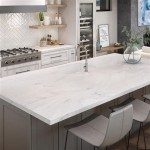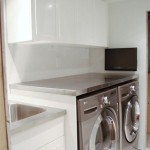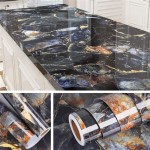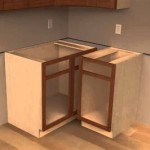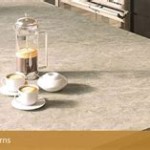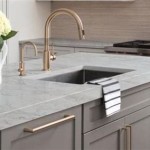Free Standing Cabinets With Countertops: A Versatile Storage and Surface Solution
Free-standing cabinets with countertops represent a highly adaptable furniture option for various spaces within a home or commercial setting. Unlike built-in cabinetry, these units offer mobility and flexibility, allowing for easy rearrangement and customization of room layouts. Their combination of enclosed storage and a usable work surface makes them a practical choice for kitchens, bathrooms, laundry rooms, home offices, and even garages. This article will delve into the features, benefits, applications, and considerations for selecting free-standing cabinets with countertops.
The core structure of a free-standing cabinet typically consists of a frame, drawers, doors, and internal shelving. The frame provides the structural integrity, usually constructed from solid wood, engineered wood products like plywood or MDF (Medium-Density Fiberboard), or even metal. Drawers offer compartmentalized storage for smaller items, while doors conceal larger or less frequently used contents. Internal shelving further maximizes storage capacity, allowing for vertical organization. The countertop, which sits atop the cabinet base, serves as a durable and functional surface for various tasks.
The versatility of free-standing cabinets with countertops stems from the wide range of materials, styles, and sizes available. The cabinet body can be finished in various paints, stains, or laminates to complement existing decor. Countertop materials include laminate, solid wood, granite, quartz, stainless steel, and even concrete, each offering different aesthetic and performance characteristics. Size options range from compact units suitable for small spaces to larger cabinets that can serve as islands or workstations. This adaptability makes them a compelling choice for homeowners and business owners seeking customizable storage and surface solutions.
Key Point 1: Advantages of Free-Standing Cabinets with Countertops
One of the primary advantages of free-standing cabinets with countertops is their portability. Unlike fixed cabinetry, these units can be easily moved and repositioned, adapting to changing needs and room layouts. This is particularly beneficial in rental properties or for individuals who frequently redecorate. The ability to move the cabinet also simplifies cleaning and maintenance, allowing access to areas behind and underneath the unit.
Another significant benefit is the ease of installation. Free-standing cabinets typically arrive fully assembled or require minimal assembly, eliminating the need for professional installation. This saves time and money compared to installing built-in cabinetry, which often requires specialized carpentry skills. The DIY-friendly nature of these units makes them a popular choice for homeowners undertaking renovation projects.
Furthermore, free-standing cabinets offer a cost-effective alternative to custom cabinetry. Stock or semi-custom options are readily available at various price points, allowing consumers to find units that fit their budget. The elimination of professional installation further contributes to cost savings. This affordability makes free-standing cabinets an attractive option for budget-conscious individuals seeking to upgrade their storage and surface capabilities.
The inherent flexibility of these cabinets also allows for phased upgrades. Instead of committing to a complete renovation, individuals can purchase and install cabinets incrementally, spreading out the cost and effort over time. This approach is particularly useful for those who want to gradually improve their space without disrupting their daily routines.
Key Point 2: Application in Different Environments
In kitchens, free-standing cabinets with countertops can serve as islands, providing additional workspace and storage. They can house appliances like microwaves or wine refrigerators, or serve as a convenient prep area for cooking and baking. The countertop surface can be used for chopping vegetables, assembling meals, or serving food. The cabinets below can store pots, pans, dishes, or other kitchen essentials.
Bathrooms can also benefit from free-standing cabinets with countertops. These units can provide storage for toiletries, towels, and cleaning supplies. The countertop can serve as a vanity, providing space for a sink, mirror, and personal care items. The cabinet's mobility allows for customization of the bathroom layout, optimizing space utilization and functionality.
Laundry rooms often require ample storage and a durable work surface. Free-standing cabinets with countertops can provide both, offering space for laundry detergents, fabric softeners, and other cleaning supplies. The countertop can be used for folding clothes, ironing, or sorting laundry. The cabinets can also house a laundry basket or hamper, keeping the space organized and clutter-free.
Home offices can also benefit from the addition of free-standing cabinets. They can provide storage for files, books, and office supplies. The countertop can serve as a desk or workstation, providing a comfortable and functional workspace. The mobility of the cabinet allows for easy rearrangement of the office layout, accommodating changing needs and preferences.
Garages often require robust storage solutions that can withstand harsh conditions. Free-standing cabinets with countertops made from durable materials like metal or composite wood can provide secure storage for tools, equipment, and automotive supplies. The countertop can be used as a workbench, providing a convenient surface for repairs and projects. These cabinets help keep the garage organized and safe, preventing clutter and potential hazards.
Key Point 3: Considerations When Selecting a Free-Standing Cabinet with Countertop
When selecting a free-standing cabinet with a countertop, it is crucial to consider the intended use and the specific needs of the space. Evaluate the required storage capacity, the desired countertop material, and the overall style of the room. Consider the dimensions of the available space and choose a cabinet size that fits comfortably without obstructing movement.
The countertop material should be selected based on its durability, aesthetics, and ease of maintenance. Laminate is a cost-effective option that offers a wide range of colors and patterns. Solid wood provides a warm and natural look but requires regular maintenance. Granite and quartz are durable and heat-resistant, making them ideal for kitchens. Stainless steel is highly durable and easy to clean, making it suitable for garages or workshops.
The cabinet's construction quality is another important factor to consider. Look for cabinets made from solid wood or high-quality engineered wood products. Ensure that the drawers and doors operate smoothly and that the hinges and hardware are durable. Check for features like adjustable shelves and soft-close mechanisms, which can enhance functionality and convenience.
The style of the cabinet should complement the existing decor of the room. Consider the color, finish, and hardware of the cabinet and choose a style that blends seamlessly with the surrounding furniture and fixtures. A wide range of styles is available, from traditional to contemporary, ensuring that there is an option to suit every taste.
Finally, consider the budget and compare prices from different retailers. Stock cabinets are typically the most affordable option, while semi-custom cabinets offer more customization options at a slightly higher price. It is also important to factor in the cost of delivery and assembly, if required. By carefully considering these factors, individuals can select a free-standing cabinet with a countertop that meets their needs and enhances the functionality and aesthetics of their space.
The weight capacity of both the countertop and the shelving inside the cabinet is an important consideration depending on the intended use. If heavy appliances or tools are to be stored, ensure the cabinet and countertop are rated to handle the load. Distributing weight evenly across the surface and shelves will help prevent damage or instability.
The presence of any pre-existing plumbing or electrical outlets in the area where the cabinet will be placed should also be considered. Modification of the cabinet may be necessary to accommodate these elements, or the placement of the cabinet may need to be adjusted. Planning ahead and taking these factors into account will prevent complications during installation.
Furthermore, it is important to consider safety aspects, especially if children are present. Cabinets should be securely anchored to the wall, particularly taller units, to prevent tipping. Childproof latches can be installed on doors and drawers to prevent access to potentially hazardous contents. Smooth edges and rounded corners can also minimize the risk of injury.
Finally, consider the long-term maintenance requirements of the chosen cabinet and countertop materials. Wood surfaces will require periodic cleaning and polishing, while laminate and quartz surfaces are generally low-maintenance. Regular cleaning and proper care will help ensure that the cabinet remains in good condition for many years.

Freestanding Kitchen Cabinets Traditional Philadelphia By The Lancaster Mill

25 Trendy Freestanding Kitchen Cabinet Ideas Digsdigs

Bring Back Good Ole Freestanding Kitchen Cabinets

Freestanding Kitchen Cabinets Traditional Philadelphia By The Lancaster Mill

Homcom Kitchen Cabinet 835 685v00wt Trading

Homcom 72 Kitchen Buffet With Hutch Freestanding Pantry Cupboard Utility Drawer 2 Door Cabinets And Countertop Black Wood Grain Shelves Storage Cabinet Aosom Canada

70 87 Pantry Storage Cabinet Freestanding Kitchen With Countertop And Open Shelves Tall Cupboard Drawers For Dining Room White Wal Com

25 Trendy Freestanding Kitchen Cabinet Ideas Digsdigs

12 Freestanding Kitchen Ideas For A Flexible And Relaxed Cooking Space

Freestanding Kitchen Cupboard With 6 Doors Drawer Adjustable Shelves Open Countertop White Green4life
See Also

